Are Green Bananas or Plantains Keto-Friendly?
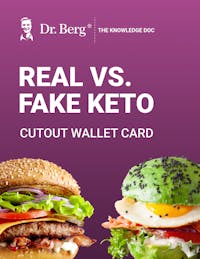
Keto vs. Non-Keto
Quickly compare keto-friendly foods with non-keto options for easy reference
Use this wallet card to make informed food choices while shopping or dining out
Identify fake keto foods and ingredients that you should avoid
Simplify decision-making with clear, practical guidelines

Keto vs. Non-Keto
Quickly compare keto-friendly foods with non-keto options for easy reference
Use this wallet card to make informed food choices while shopping or dining out
Identify fake keto foods and ingredients that you should avoid
Simplify decision-making with clear, practical guidelines

Keto vs. Non-Keto
Quickly compare keto-friendly foods with non-keto options for easy reference
Use this wallet card to make informed food choices while shopping or dining out
Identify fake keto foods and ingredients that you should avoid
Simplify decision-making with clear, practical guidelines

Keto vs. Non-Keto
Quickly compare keto-friendly foods with non-keto options for easy reference
Use this wallet card to make informed food choices while shopping or dining out
Identify fake keto foods and ingredients that you should avoid
Simplify decision-making with clear, practical guidelines

Keto vs. Non-Keto
Quickly compare keto-friendly foods with non-keto options for easy reference
Use this wallet card to make informed food choices while shopping or dining out
Identify fake keto foods and ingredients that you should avoid
Simplify decision-making with clear, practical guidelines

Keto vs. Non-Keto
Quickly compare keto-friendly foods with non-keto options for easy reference
Use this wallet card to make informed food choices while shopping or dining out
Identify fake keto foods and ingredients that you should avoid
Simplify decision-making with clear, practical guidelines

Keto vs. Non-Keto
Quickly compare keto-friendly foods with non-keto options for easy reference
Use this wallet card to make informed food choices while shopping or dining out
Identify fake keto foods and ingredients that you should avoid
Simplify decision-making with clear, practical guidelines

Keto vs. Non-Keto
Quickly compare keto-friendly foods with non-keto options for easy reference
Use this wallet card to make informed food choices while shopping or dining out
Identify fake keto foods and ingredients that you should avoid
Simplify decision-making with clear, practical guidelines

Keto vs. Non-Keto
Quickly compare keto-friendly foods with non-keto options for easy reference
Use this wallet card to make informed food choices while shopping or dining out
Identify fake keto foods and ingredients that you should avoid
Simplify decision-making with clear, practical guidelines

Keto vs. Non-Keto
Quickly compare keto-friendly foods with non-keto options for easy reference
Use this wallet card to make informed food choices while shopping or dining out
Identify fake keto foods and ingredients that you should avoid
Simplify decision-making with clear, practical guidelines

Keto vs. Non-Keto
Quickly compare keto-friendly foods with non-keto options for easy reference
Use this wallet card to make informed food choices while shopping or dining out
Identify fake keto foods and ingredients that you should avoid
Simplify decision-making with clear, practical guidelines

Keto vs. Non-Keto
Quickly compare keto-friendly foods with non-keto options for easy reference
Use this wallet card to make informed food choices while shopping or dining out
Identify fake keto foods and ingredients that you should avoid
Simplify decision-making with clear, practical guidelines

Keto vs. Non-Keto
Quickly compare keto-friendly foods with non-keto options for easy reference
Use this wallet card to make informed food choices while shopping or dining out
Identify fake keto foods and ingredients that you should avoid
Simplify decision-making with clear, practical guidelines

Keto vs. Non-Keto
Quickly compare keto-friendly foods with non-keto options for easy reference
Use this wallet card to make informed food choices while shopping or dining out
Identify fake keto foods and ingredients that you should avoid
Simplify decision-making with clear, practical guidelines
Green bananas and plantains are rich in resistant starch, an indigestible type of carbohydrate that supports gut health and blood sugar control but are plantains keto friendly?
Plantains and bananas are high in carbs, and whether they’re keto-friendly depends on their ripeness and how they’re prepared. This can make it challenging to keep on track with your daily net carb count.
Let’s look at the difference between green and yellow plantains and learn why plantains and bananas can quickly push you out of ketosis.
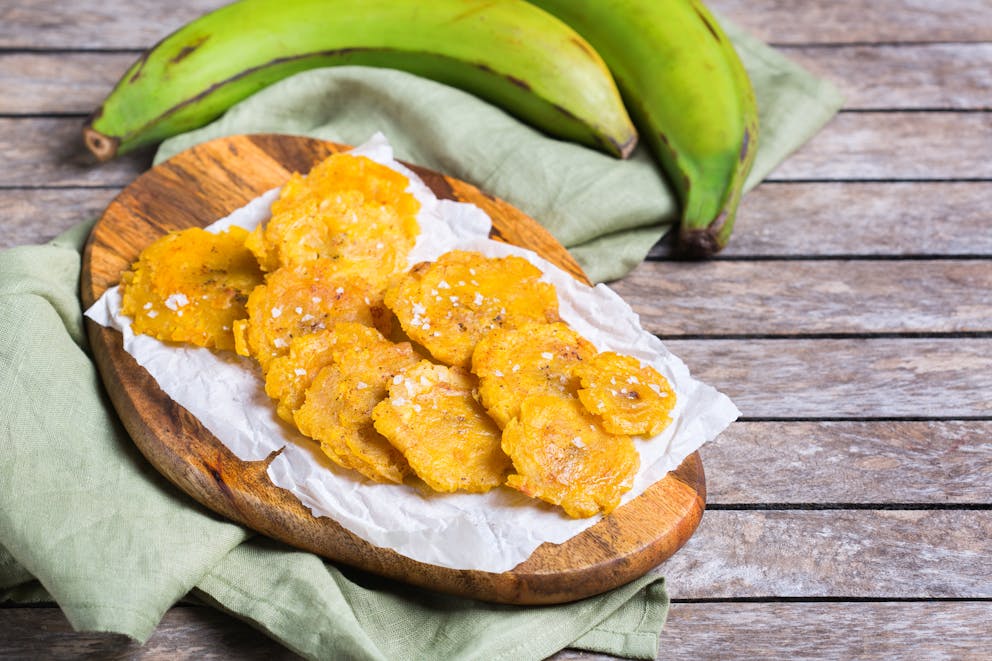
What is keto?
The ketogenic diet is a low-carb, high-fat diet that primes your metabolism to burn fat for fuel instead of sugar. As your liver breaks down fats, it generates ketone bodies—a by-product of fat metabolism and an efficient energy source.
When ketones accumulate in your circulation and your cells start using them as the primary fuel source, you enter a state known as ketosis.
Ketosis can achieve rapid weight loss and has several other health benefits, including improved blood sugar control, increased energy and mental clarity, and a reduced risk of type-2 diabetes and heart disease.
To trigger and maintain ketosis, consume no more than 20 to 50 grams of net carbs per day and opt for healthy fats to get most of your daily calories.
Watch the video below to learn why it’s best to avoid ripe plantains and bananas on a low-carb diet.
Are plantains keto-friendly?
Compared to yellow bananas, green plantains are considerably lower on the glycemic index (GI)—a scale of how quickly a food raises blood sugar levels compared to glucose, which has a GI of 100.
Foods with a high GI spike blood sugar and insulin levels quickly, which interferes with ketosis and pushes your body to run on sugar, which can lead to weight gain and may cause long-term metabolic health issues.
Although plantains are high in carbohydrates, they’re rich in resistant starches, which buffer the impact of carbs on blood sugar. On average, a green plantain has a GI of 40 and between 15 to 20 net carbs, making small amounts safe on keto.
As plantains ripen, their starches are converted into sugars which explains why ripe plantains are sweeter than green ones and typically have a higher GI of around 60.
Another important aspect of whether plantains are keto-friendly depends on their preparation. Because of the bitter taste of a raw plantain, most people prefer fried sweet plantains or plantain chips.
However, heat and processing convert resistant starches into sugar, and eating cooked or fried plantain chips can impact blood glucose and insulin levels and kick you out of ketosis.
Resistant starch explained
Resistant starch is a type of carbohydrate that isn't broken down and absorbed in the small intestines.
Resistant starch doesn’t undergo enzymatic digestion and passes into the colon relatively intact, where it serves as a fuel source for the friendly bacteria residing in your gut.
Because resistant starch doesn’t enter your circulation, it doesn't impact blood sugar levels and keeps insulin low. Consuming resistant starches slows down digestion and the release of carbs into the bloodstream, which promotes metabolic health and helps with weight loss.
According to research published by a group of gastroenterologists in Nutrition and Diabetes, “Resistant starch increases systemic insulin sensitivity and significantly reduces adipose tissue, which has clinical significance in the care and prevention of diabetes.”
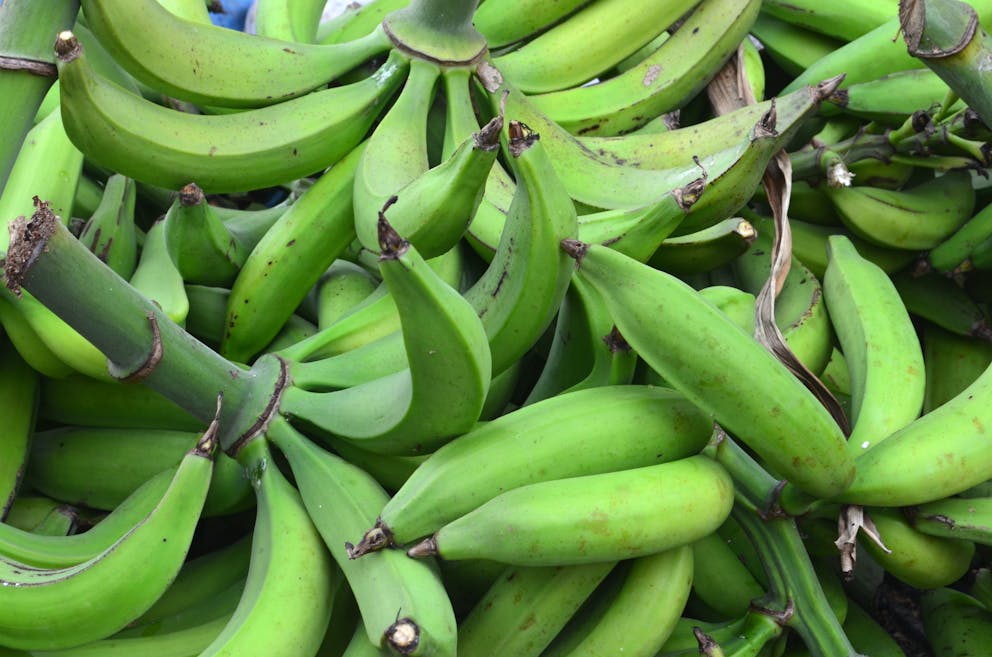
Green bananas vs. yellow bananas on keto
Green bananas contain more resistant starch than yellow bananas and have a slightly bitter taste. Yellow bananas, on the other hand, contain less resistant starches and more sugars which explains their sweetness and softer texture.
Yellow bananas aren't suitable for keto because of their high carb content. Medium-sized ripe bananas contain around 28 grams of carbs which can quickly exceed your daily net carb count and push you out of ketosis.
“While moderate amounts of green bananas are technically safe on keto, they contain almost no protein or fat and aren’t an ideal keto ingredient,” explains Dr. Berg.
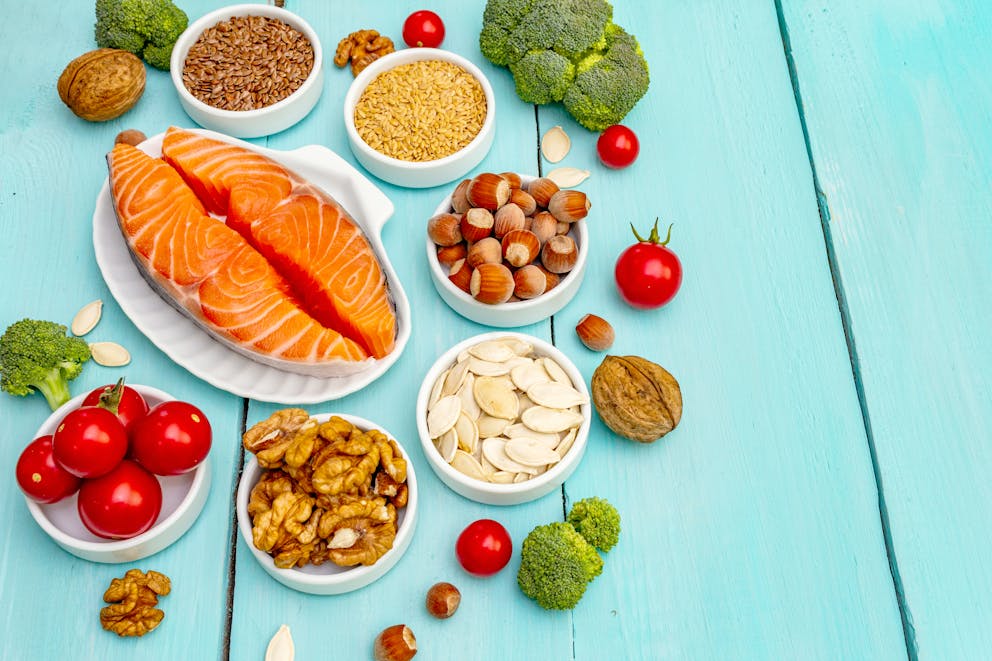
Keto-friendly sources of potassium
Contrary to popular belief, bananas aren’t the best source of potassium—a crucial electrolyte that supports muscle function and maintains nerve transmissions.
One banana contains around 350 mg of potassium, and it takes about ten bananas to obtain your daily potassium requirements, which would spike your blood sugar and insulin levels and push you out of ketosis.
And, what’s more, a study published in the Journal of Athletic Training found that eating bananas after a workout doesn’t significantly improve potassium levels but causes noticeable spikes in blood sugar levels.
Luckily, there are plenty of keto-friendly potassium sources:
Avocados - One whole avocado contains 950 mg of potassium.
Salmon - A 100-gram (4 oz) serving of salmon delivers 750 mg of potassium.
Meat and poultry - A 4-ounce serving of meat contains around 350 mg of potassium.
Green leafy veggies - Spinach, kale, and Swiss chard provide about 558 mg of potassium per 100 grams.
Mushrooms - 100 grams of mushrooms provide around 318 mg of potassium.
Seeds and nuts - Almonds, walnuts, and chia seeds are keto-friendly and contain around 700 mg of potassium per 100 grams.
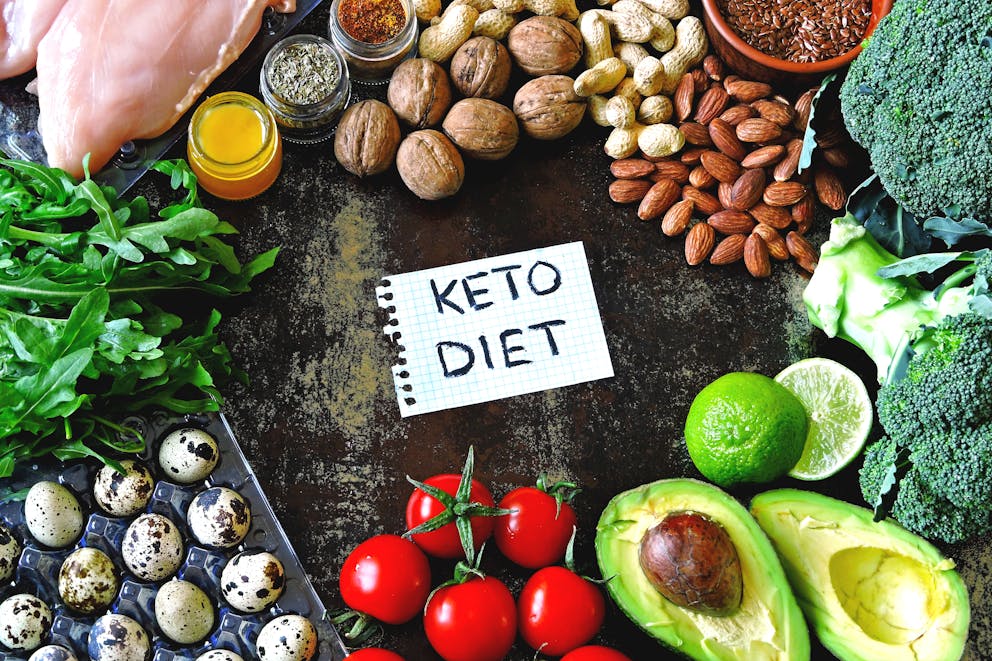
Key takeaways
While moderate amounts of green bananas and plantains are technically keto-friendly, it’s essential to understand that their sugar content depends on their ripeness and the way they’re prepared. This can make it challenging to stay on track with your daily net carb count and maintain ketosis.
If you are looking for a keto-friendly potassium alternative to bananas, you have plenty of low-carb options such as avocados, salmon, green leafy vegetables, and seeds and nuts.
FAQ
1. Can you eat plantains on keto?
Green plantains are high in carbs but are rich sources of resistant starch, which slows down digestion and the release of sugar into the blood.
Eating small amounts of raw green plantain won’t push you out of ketosis. However, ripe or cooked plantains contain significantly more sugar which can interfere with ketosis and make them unsuitable for a low-carb diet.
2. Are plantains high in carbs?
Yes, plantains are high in carbs. Green plantains, however, have a high amount of resistant starch, which buffers the carbs' impact on your blood sugar. In contrast, ripe plantains contain lower amounts of starches and more sugars.
3. Are plantain chips keto?
No, plantain chips aren’t keto-friendly. Cooking converts the starches in plantains into easily digestible carbs, which can spike your blood sugar and insulin levels and interfere with ketosis.
4. Are there a lot of carbs in plantains?
Yes, there can be too many carbs in plantains for a low-carb diet. A medium-sized ripe plantain has around 40 grams of net carbs, and green plantains contain between 15 and 20 grams of carbs. Stick to unripe plantains to minimize your carb intake. Eating plantains can quickly push your carbs over your daily limit.
5. How many carbs are in green bananas?
How many net carbs a green banana has depends on its size and ripeness. On average, a medium-sized green banana contains around 17 grams of net carbs.
6. Will a banana kick me out of ketosis?
Depending on your overall daily net carb intake, eating one medium-sized green banana may not impact your blood sugar levels significantly.
However, most people prefer eating yellow, ripe bananas, which are high in sugars and can quickly exceed your daily net carb count and push your metabolism out of ketosis.
7. What is resistant starch?
Resistant starch is a type of carbohydrate that isn’t broken down by digestive enzymes. Because it’s not absorbed, resistant starch passes through the intestines undigested and serves as a fuel source for the beneficial bacteria in your colon.
Resistant starch also slows down digestion which significantly buffers the impact of carbs on blood sugar and insulin levels, helps with cravings and weight loss, and lowers the risk of insulin resistance.
8. What are the best sources of potassium on keto?
Salmon, avocado, seeds, nuts, green leafy veggies, and meat and poultry are excellent low-carb potassium sources you can safely consume on keto.
Previous blog
High Levels of Blood Urea Nitrogen on a Ketogenic DietTags

Popular
08/21/2024
43.7K views
05/22/2024
39.2K views
11/18/2024
228.3K views
03/18/2024
11/21/2022




